Puccini: La Fanciulla del West (Rizzi)
The whole idea of the 'Wild West' fascinated Puccini ever since he witnessed Buffalo Bill's touring show in Milan many years earlier, and so when he had the chance to try something new, the composer went back to David Belasco (who also wrote the story on which Madame Butterfly is based) and his novel, 'Girl of the Golden West'.
The story itself is of the type that appeared in numerous clichéd and forgettable Westerns, yet these were the staple diet of cinema audiences for decades and the music reminds us of so many early romantic film dramas that it's easy to forget it was written before anything like that was even dreamt about.
Puccini's 'Cowboy Opera' (actually, a 'Californian Gold Rush Opera') has, in Nikolaus Lehnhof's production, been updated to a more contemporary America. Here, the stock markets are the new gold seams and the miners appear to be a bunch of chancers who look as if they're into various criminal activities including money laundering and illicit gambling. We have basically been thrown into a plot of a 'cheap' western of the type that filled up cinemas on Saturday mornings several decades ago.
The work opens onto a grim, underground bar where everyone is dressed up in black leather, weapons at the ready.
Minnie's bar, 'The Polka' is now a slot machine, whisky and cigar-fuelled den of which the clientele are part gangster, part-opportunist, and all are far from home. The masculinity of these men is never in doubt but they show they all have a heart when passing round the hat to get a homesick fellow 'miner' back to where he came from.
The entrance to the bar is akin to a large drain through which everyone, apart from Minnie herself, slinks. Minnie is privileged to appear from above, giving her the goddess-like qualities Puccini's music suggests and for which the men worship her. In this production, she is even more the cigar smoking, whiskey drinking, sharp shooting, bible reading, virginal mother-to-all which the libretto suggests.
Act 2 takes place in Minnie's mountain cabin - here, a shockingly pink trailer which you can imagine would be set up for a film star, which is perhaps something to which Minnie aspires. One side is removed so the whole living area appears tiny compared to the snowy wilderness outside.
For the final act, we are taken into an impressive recreation of a car junk yard, prompting spontaneous applause from the audience (slightly more 'appreciative' than what sounded like laughter when the Act 2 trailer appeared). As with the rest of the production, colour is scarce, used only when Minnie appears, and here, the appearance is pure Hollywood. When she comes to rescue her lover, the cars part, revealing one of those lit staircases that wouldn't be out of place in a Busby Berkeley musical…together with the MGM lion in the background and Minnie done up as Jean Harlow. Cue even more applause. It's all done in the best possible taste of course.
So, despite the inevitable anachronistic (and sometimes borderline racist) references in the libretto, this is an updated production that I actually felt happy watching.
'La Fanciulla..' is maybe a less accessible work than his previous operas. This could well be because Puccini wanted to sound more 'modern'. There are no big arias as such, but it's more of an attempt to create a music-drama in the style of Richard Strauss, though one thing which is always going to thrill in a Puccini opera is the entrance of the heroine, and with all the beauty and none of the subtlety of the equivalent moments in Tosca, Bohème or Butterfly, Minnie's music explodes with the passion of the men looking at her.
It would be easy to dismiss this music as over the top yet with some of the most lush scoring of his career, this opera was to influence many film soundtracks composed since.
Eva-Maria Westbroek, who is perhaps better known for her Wagnerian roles, makes the character of Minnie her own, with a nice blend of motherliness, sharp wittedness and nervous never-been-kissedness. Her singing is also beautifully Italianate when it needs to be, and she is capable of phrasing of which only an experienced Wagner singer can manage successfully.
Zoran Todorovich's is a hugely impressive Dick (Johnson from Sacramento), and is very assured in the high registers the role demands. 'Ch'ella mi creda' (the closest thing to yer actual aria) is securely performed. It's a great shame that his final 'Addio's are very flat indeed.
Lucio Gallo's Jack Rance isn't nearly as threatening as he should be (in the first half at least) but his rather light baritone voice is secure and he makes a believeable philanderer.
The large supporting cast are variable. The chorus has its moments, but there is some scrappy ensemble in Act I and some quite wooden acting. Perhaps the best 'other' moment comes from the nattily-dressed André Morsch as the singing cowboy Jake Wallace, whose nostalgic song isn't as cheesy as it often sounds.
In the pit, the expertise of Carlo Rizzi in this repertoire is obvious as he drives the music forward as much as he can (anything else would make things seems as if we were swimming through treacle) yet leaves enough breathing room for the important moments to make enough impact. The orchestral sound is lovely, and there's no problem of balance, especially on the DTS track.
The NTSC picture quality is superb, with effective contrasts even in the darker scenes and this makes the sudden appearance of bright colours even more striking. We also have an advantage over the theatre audience as the cameras are able to capture the more intimate moments without the distraction of seeing everything else on stage aswell.
A 20 minute documentary including a few apposite soundbites from members of the cast and opera reviewer Basia Jaworski (who isn't mentioned in the booklet but is obviously a great fan). Westbroek waxes lyrical about the music, and shamelessly plugs a rival DVD (the good old reliable ROH version with Domingo and Carol Neblett), which is a production she starred in herself the year before this very performance.
Overall then, a very satisfying account of a work which is gaining popularity but which is still not given its rightful place in the mainstream repertoire. Productions and performances such as we have here can only help.
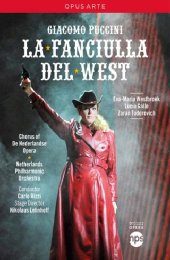

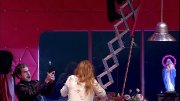

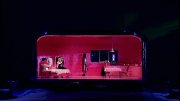
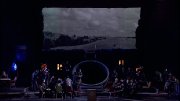
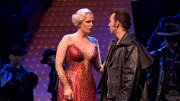
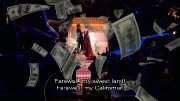

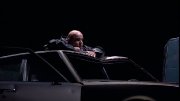
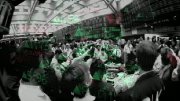
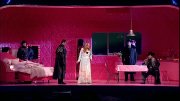
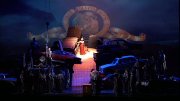
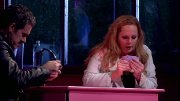

































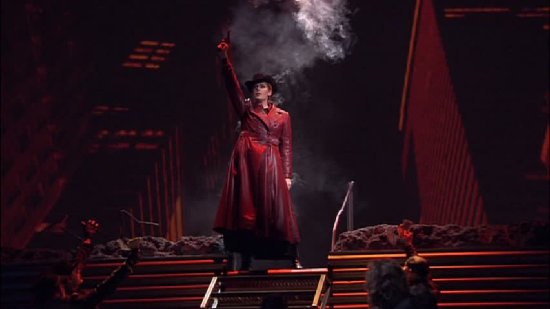



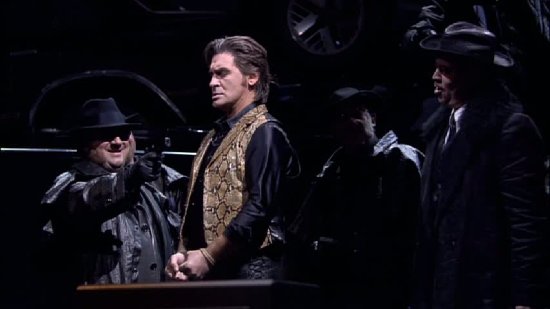



Your Opinions and Comments
Be the first to post a comment!